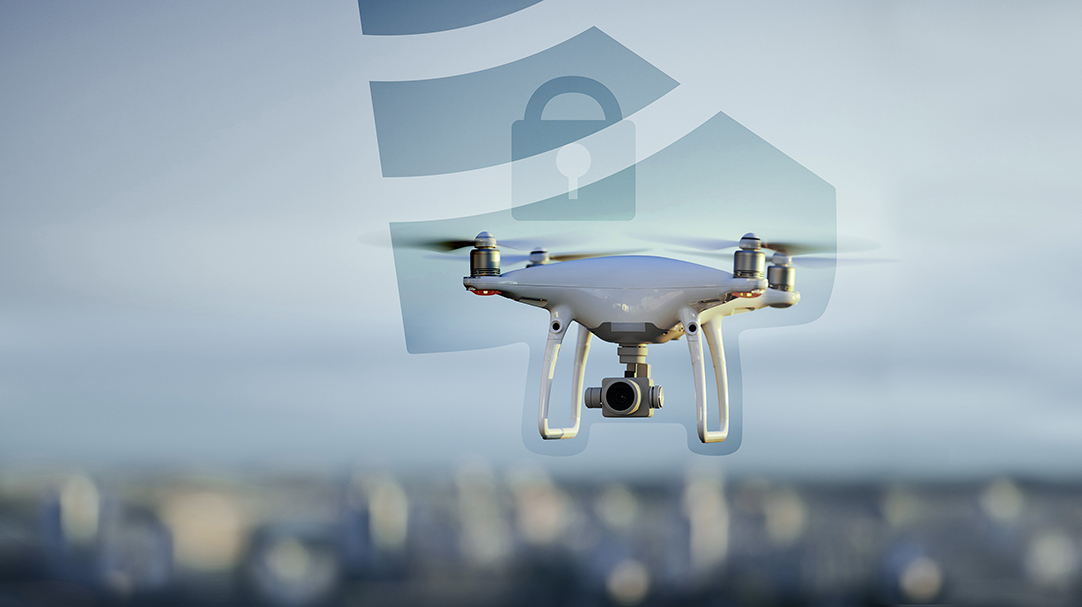Whether for the transport of goods, the inspection of buildings or civil protection: drones offer many possible applications due to their flexibility and speed. Limits are set by the legislator for the control of drones beyond the visual line of sight of the pilot (BVLOS). This is due, among other things, to the use of freely available, unencrypted navigation signals to determine position, which can easily be manipulated or interfered with and thus make the drone a danger.
Reliable positioning
In the project »secured, autonomous BOS drones« (AABD), the specially protected and encrypted signals of the Galileo Public Regulated Service (PRS) are made available for the first time for use in a drone through the server-based Galileo PRS technology. This makes it possible to determine the position of the drone beyond the pilot's line of sight in a tamper-proof and interference-proof manner. With the server-based Galileo PRS technology, raw data from the Galileo PRS signals are recorded in a receiver on the drone and forwarded to a specially protected server infrastructure (cloud computing). There, these are then evaluated and, depending on the application, a confirmation of the verified position is sent back to the drone or can be queried by a client. In contrast to conventional Galileo PRS receivers, the server-based Galileo PRS technology allows the use of more energy-saving and miniaturised receivers, which is what makes its use on a drone possible in the first place.
Autonomous drone flight
Due to the reliability of the position determination, it will also be possible in the future to fly the drone without a pilot, i.e. autonomously. It could conceivably be used, for example, by the fire brigade to identify embers in fires from the air. This would allow valuable fire brigade personnel to be deployed for other purposes than drone control. The drones with Galileo PRS will then be available for authorised users and authorities and organisations with security tasks (BOS).
The Fraunhofer Institute for Material Flow and Logistics IML is responsible for the development of the drone, including the emergency landing function and the evaluation of the flight scenarios. The Fraunhofer Institute for Integrated Circuits IIS integrates the server-based Galileo PRS technology and examines the secure flight position of the drone using a spoofing scenario, i.e. the simulation of an attack on the drone's position.
 Fraunhofer Cluster of Excellence Cognitive Internet Technologies CCIT
Fraunhofer Cluster of Excellence Cognitive Internet Technologies CCIT